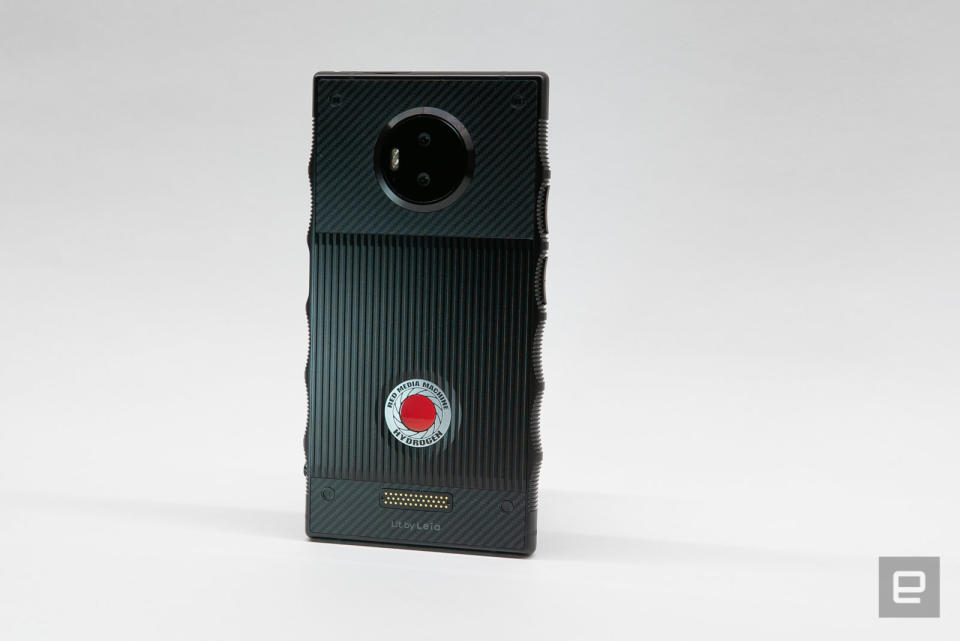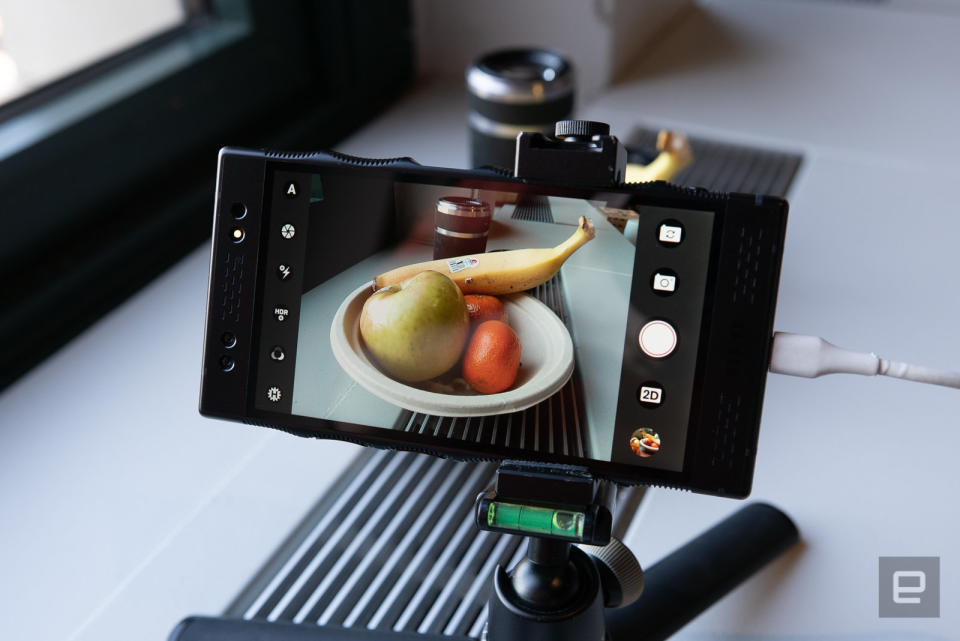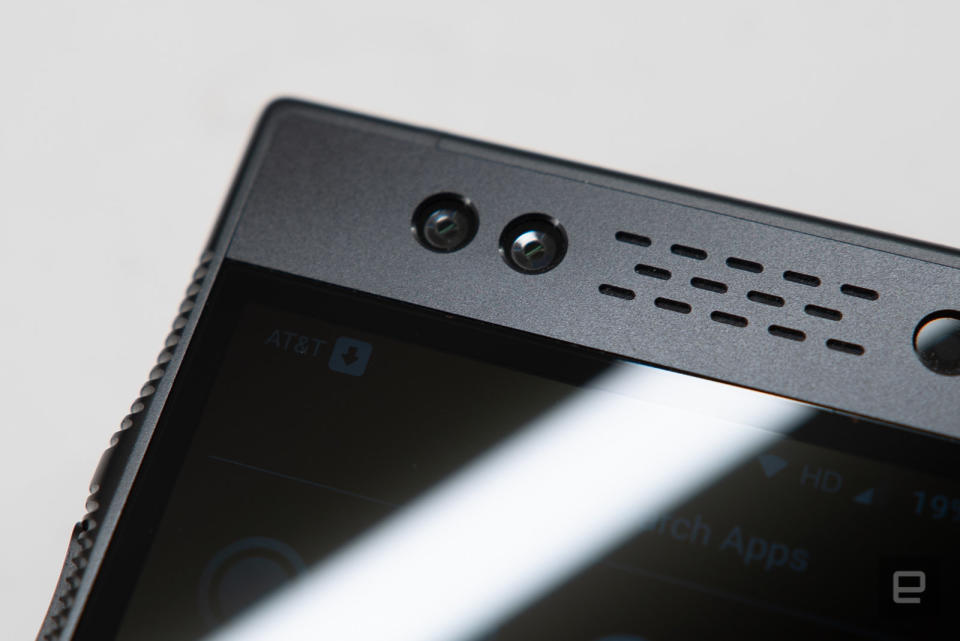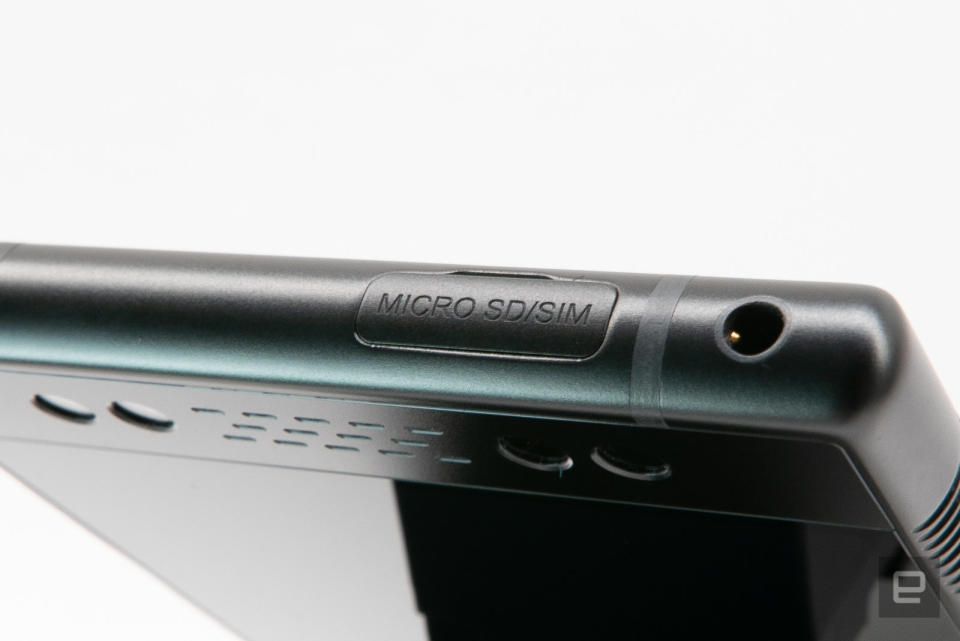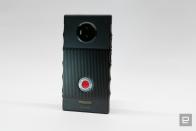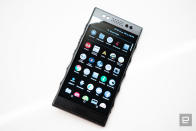Engadget has been testing and reviewing consumer tech since 2004. Our stories may include affiliate links; if you buy something through a link, we may earn a commission. Read more about how we evaluate products.
RED Hydrogen One review: Mediocre cameraphone, extraordinary price tag
RED's first smartphone offers a deeply compromised camera experience
The RED Hydrogen One is not really a smartphone, it's a camera that also happens to be a smartphone. This makes sense to me intuitively, because when I use smartphones for video projects, or to take photos on vacation, I use a separate phone as the camera. That's exactly what I did with a Galaxy S9 when I was testing the Moment Lens Anamorphic on a trip to Yosemite.
If you conceptualize the Hydrogen as a phone that competes with Samsung, Apple, or Huawei, it just flatly doesn't make sense. But ask yourself this: if you were designing a pocket camera today, would you use the slow embedded chips that Sony, Canon, and Nikon use in their compact cameras? Or would you use a speedy Snapdragon chip, like the one Google is using in the Pixel 2 to deliver its category-leading computational photography?
The Hydrogen phone
When I spoke to Jim Jannard, the founder of RED, he told me that "this really isn't a cellphone, it's a media machine that happens to have a cellphone included" and that "...everything was done thinking about this as an image capture machine." So, considering that, we're going to focus primarily on the camera in this review. We'll definitely talk about the phone-side of things as well, but given the company's stated priorities, that will come second.
But before we go on, there's one thing to keep in mind throughout: the Hydrogen costs $1,295. As of this writing, the Galaxy S9 costs $669 at Best Buy, just for context.
The Hydrogen camera system
The Hydrogen's stand-out feature is 3D photo and video capture, which the company calls "4V" or "four view." There are four cameras on the device arranged in two stereo pairs on the front and back. These two pairs are oriented differently, though, meaning that you can only capture 4V pictures and video horizontally with the rear camera system and vertically in the front. It's a little weird in practice, but it does make sense.

Before we get into the 4V aspects of the camera system, though, I think it's important to evaluate the camera system in 2D, for a couple of reasons. First, like any system, the quality of what you put in will influence what you get out. So if the 2D images and videos are great, it's likely that the 4V results will also be great. But if they're bad, the results will also be bad, but in 3D.
The second reason is simple: everyone else has a 2D screen. So even if you capture a rad 3D picture, everyone that you share it with will only be able to enjoy it in 2D. And if the Hydrogen is a camera first and a smartphone second, it should be able to deliver class-leading 2D images ripe for Instagram.

So without further ado, let's break down this camera system. Around back you've got two 12.3 megapixel sensors. Two things matter when it comes comes to light-gathering ability: pixel and aperture size. The Hydrogen's cameras have 1.55μm pixels, which is 0.15μm larger than what you'll find on the Galaxy S9 or the Pixel 2 at 1.40μm. However, the aperture, which is the size of hole that lets light in, is f1.8, which lets in less light than the f1.5 aperture you'll find on the S9. Yes f1.8 is smaller than f1.5. I don't make the rules.
Anyway, the point is that there's nothing particularly special about these sensors. They don't gather radically more light than other smartphones, they aren't ridiculously large like the 40MP monster on the P20 Pro or Mate 20 Pro, they're just normal cameras with sensors that I can only assume are from 2017, given the how late the device is. The Hydrogen's cameras also lack optical image stabilization (or OIS), which is a big deal. Both the iPhone XS and the Galaxy Note 9 have dual camera systems where both lenses are stabilized, so it's certainly not impossible. What this means is that videos will be shakier and photos a bit blurrier in challenging lighting conditions.
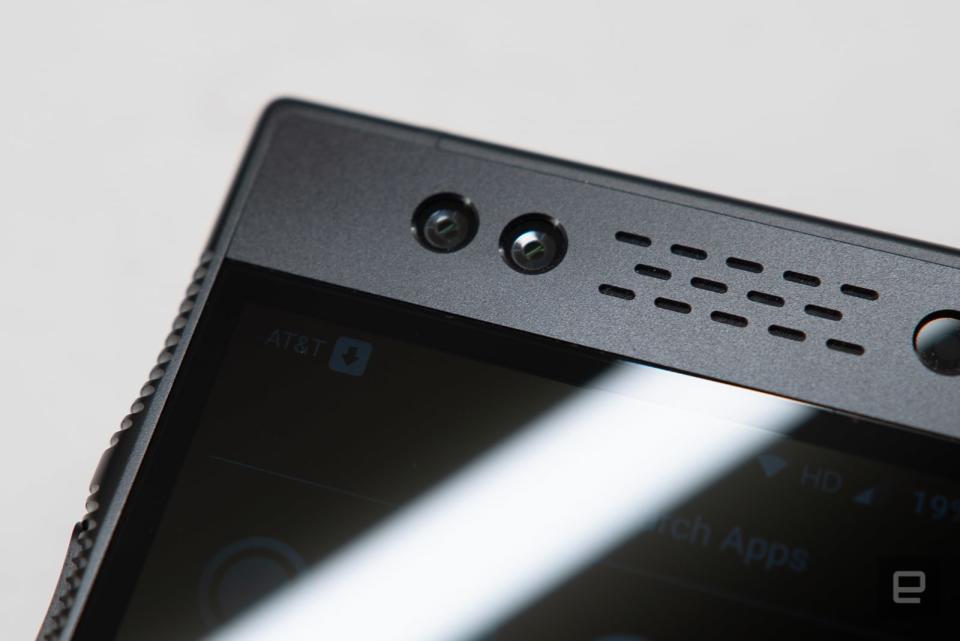
With just these specs in mind, the argument for the Hydrogen being an ideal image capture machine isn't looking good, at least on paper. The specs on the rear cameras are suspiciously similar to those in the first generation Pixel (that also lacked OIS), which is a few years old now. Plus, it was Google's excellent HDR+ algorithm that made the Pixel shine, not necessarily the hardware.
I asked Jannard specifically about whether RED uses similar machine learning techniques as Google to enhance images. He said "if you look up the DXOMark score for what is the best 2D camera, all you have to do is type in RED and see our 4-year old Helium camera [which] is miles ahead of any other 2D camera in the world. We have the technology, but we just don't have the time to make launch. But trust me, there will be nothing in image capture that we don't beat everyone in the industry, given enough time."
That doesn't really address the question though, so let me be clear: the Hydrogen does have HDR, but there's no evidence that the device employs machine learning or uses the same number of frames that Google does in its HDR+ algorithm. But RED has earned some benefit of the doubt when it comes to the image pipeline given what it's doing in cinema cameras. After all, the Helium he references could record 8K video at 60fps in RAW back in 2017, nevermind the fact that it's two years old and not four.
But implied in Jannard's response is a notion that the company will improve the Hydrogen's image quality over time. Fortunately, we can actually see the improvements RED has made in its imagine code because I was able to capture some before-and-after shots between its September pre-production firmware and the latest October update.
There are some miniscule differences between the September firmware and the October update. The new firmware has slightly more contrast and saturation, but that's really all I can spot.
Now, let's compare a Pixel 2 with similar hardware (Snapdragon 835, 12MP camera) and the Note 9 to the Hydrogen with the latest firmware.
To my eyes these all look... pretty much the same. On one hand, that's great for the Hydrogen because the Pixel 2 and the Note 9 both have great cameras. On the other, it makes the value proposition of the Hydrogen feel weak. The good news is that since the 2D pictures are pretty good the 3D pictures should be too.
Okay, but what about video? Will RED's expertise in cinema cameras carry over to smartphone video?
Answer: not really--the video looks worse than that of the Note 9 and Pixel 2. The Hydrogen's colors are a bit overcooked, and though it's hard to see because of YouTube's compression, there are serious video and audio compression artifacts in the original files.
I expected better colors in particular from a company like RED. There's nothing wrong with the colors here, but I was hoping for either very muted colors that would be conducive to color grading in post-production or just great colors, like the kind that Fuji cameras produce. Perhaps I'm expecting too much, but if all you're getting is standard smartphone video, but using two cameras to do it, then that seems like a solution looking for a problem.
One place where RED could've gained major points in my book is the camera app itself. It's ugly as sin, and I would've expected tons of filmmaker options, like control over bitrate, frame rate, and encoding format. You do get options for white balance, saturation, contrast, and brightness, but that's it, and they're buried in the settings.
3D media
One thing I'm sure many of you are wondering is: do I even want 3D media outside of the movies? I actually think so, but not like this. Rewind the clock to 1991 when a company called Nishika released its lenticular 3D camera. It captures four images on film at once, which the more tech savvy can combine to create GIFs with an effect colloquially known as "wiggle 3D." The camera has had a resurgence on Tumblr. Just search "Nishika" and you'll find an entire community posting these novel 3D slices of time.
https://iiieyeview.tumblr.com/post/165876198357/flacko
When I look at 4V pictures on the Hydrogen, I get a very similar feeling to the Nishika images. There's more context of time and place--time is frozen, but the separation between the subject and the background makes the scene feel more alive. It is actually really cool. But there's a huge difference: I can share Nishika 3D images with you on this website, or in a group chat, or on Twitter, but I can't share these 4V images with you anywhere. Photography, for most people, isn't a solitary art.
I did try to manually extract the stereo pair of images taken on the Hydrogen and sort of hack my own wiggle 3D out of them, but there is no official way get both images. RED uses a proprietary method to embed the second image into the metadata of the first image, meaning there's no DIY workaround. When I asked Jannard about this he said an official export tool could appear in the future, but it's not something you can do today.
All these factors add up to a very compromised filmmaking tool.
4V video is, thankfully, a different story. The output file does use a proprietary .h4v container, and you can import these files into Adobe Premiere, but they need to be renamed to .mp4. This seems unnecessary and annoying, but hey, it's a Hydrogen world and we're just living in it.
There are other disappointing aspects of 4V. The first is that you're limited to 1080p. This is understandable, to a certain extent, because the Snapdragon 835 wasn't designed to handle the bandwidth of dual 4K streams. Still, this will probably feel like kind of a downer for someone who really wanted to create a low-budget film in 3D, which is ostensibly the point of this device. Even worse, these seem to be recorded at ~11mbps, which is brutally low. These videos are compressed to death.
All these factors add up to a very compromised filmmaking tool. 29fps, low resolution, extremely high compression, and no options to change these settings—these are the hallmarks of a consumer product, not an enthusiast camera.
If you really want to make a 3D film on an insanely low budget (and on a phone, for some reason) it would be cheaper to buy two Galaxy S9s and figure it out in post. Or you could get one of these discontinued Panasonic 3D lenses off eBay, slap it on a Panasonic G85, and go to town.
In summary, the Hydrogen isn't meaningfully better than any other flagship phone for mobile photography or video. There's nothing about the device that makes content creation easier except, maybe, that you can pop the SD card out without a SIM tool.
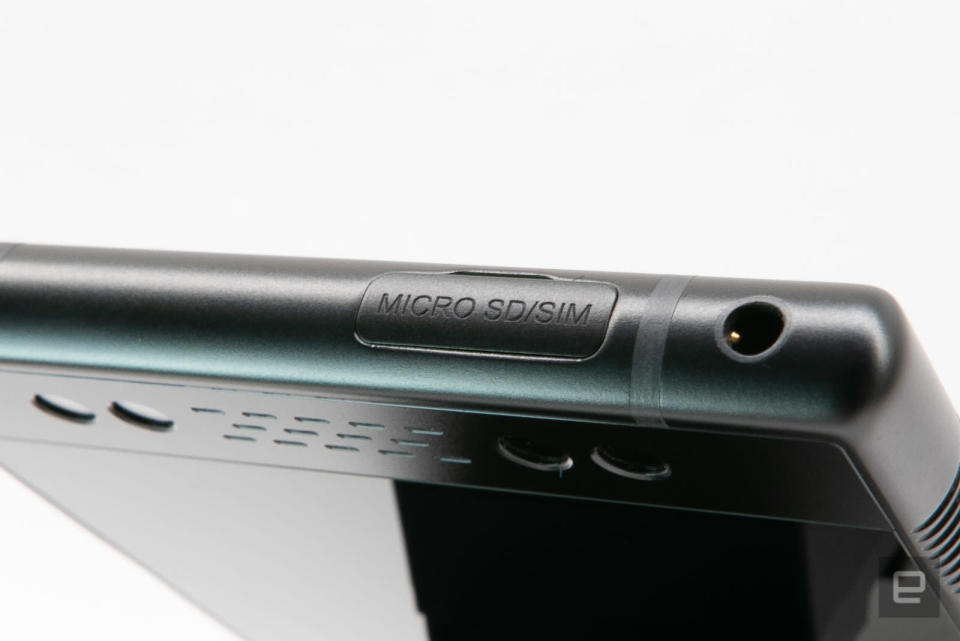
The rest of the Hydrogen
As a piece of gear, the Hydrogen is not unlikeable. Its gigantic, heavy, and it has the same energy drink industrial design as RED's cinema cameras, but as a gear-head I do kind of like it. It feels like a device I could confidently take on a remote mountain climbing trip and not worry about breaking it. I like that a lot, and if Samsung had made an Active variant of the S9, I would've liked that too.
But as a phone, the Hydrogen falls down. The screen, even in standard 2D mode, looks bad. I can easily see the pixels (this is not a joke or a euphemism, I can literally see them), and there's an internal light refraction that gives the whole screen a low-contrast look, very similar to older TFT monitors.

In 4V mode, the screen is actually quite a bit better than a Nintendo 3DS. It's not lenticular, meaning that you can look at it in 4V mode vertically or horizontally, and I noticed when showing it to coworkers that the 3D viewing angles are actually pretty wide. But if you move the phone at all the image shifts and look unstable, just like any other glasses-free 3D display. It's not terrible, but it certainly isn't awesome.
One thing the Hydrogen really delivers on is battery life. The device's humongous frame is padded with a 4,500mah battery that just keeps going and going. Enthusiasts have been asking for thicker phones with larger batteries for a while now, and those people's calls have been answered.
Unfortunately, the AT&T review unit I received is full of bloatware. The launcher uses a weird 3D rotating animation as you swipe through home screens that harkens back to Android 5.0. Plus, RED's suite of apps have extremely ugly grey icons that don't match any of the other icons. Even though the Hydrogen runs Android 8.1, the software makes it feel like I'm using an ancient novelty phone.
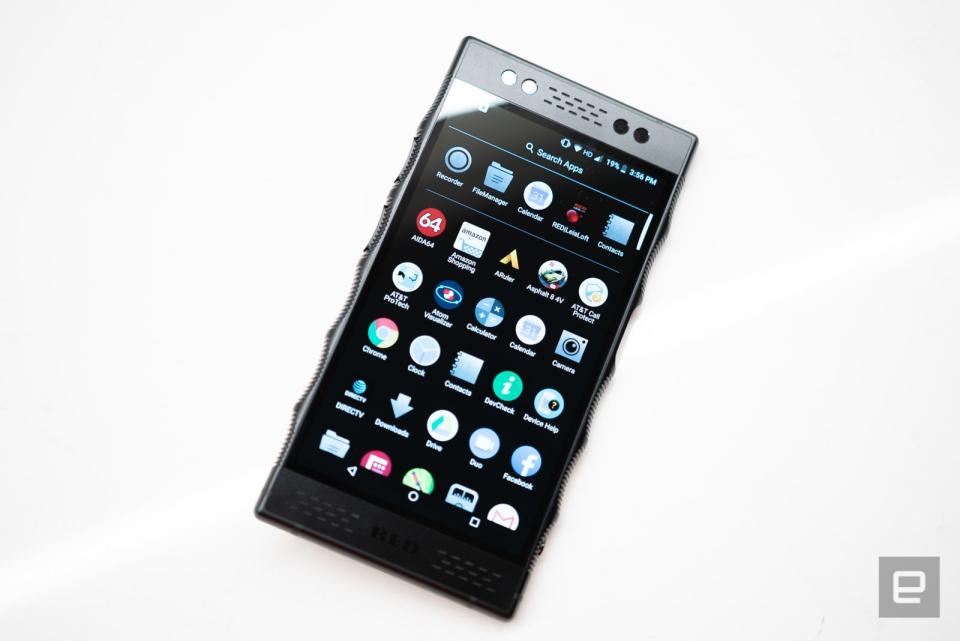
Of course, there's also the modular aspect to the Hydrogen. The company is planning on releasing a camera back for the Hydrogen in 2019. When I spoke with Jannard, he pitched an accessory with a large camera sensor that could accommodate real DSLR and mirrorless lenses. But by the time 2019 rolls around the Hydrogen's Snapdragon 835 will be two years old, and even if this accessory is a half-inch thick, we'll be talking about a package that's uncomfortably close to the size of an APS-C mirrorless camera, like the Sony a6500. And since the Hydrogen doesn't include any meaningful filmmaking perks like awesome colors, real-time grading, or granular shooting options, there just doesn't seem to be a real value proposition.
As I said at the top, the notion of building a camera on top of smartphone hardware isn't a bad one. But with an eye-popping price tag of $1,295, the Hydrogen is entering a market saturated by more affordable options with great cameras like the Galaxy S9, as well as excellent compact cameras like the Sony RX100. And given the fact that RED isn't offering anything more to mobile content creators than an isolated 3D experience, I can't recommend it.

